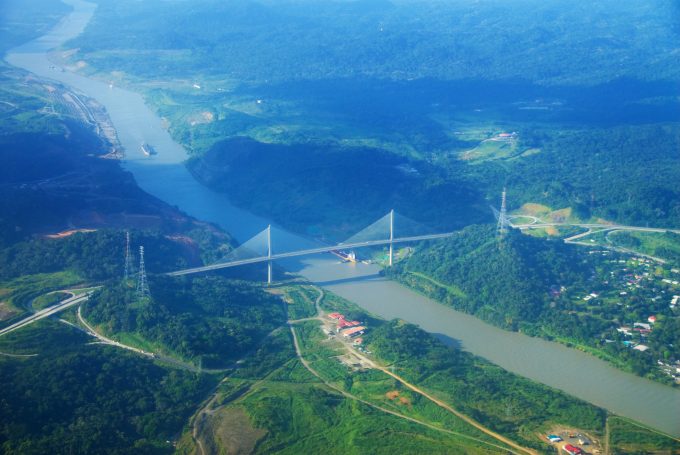Maersk developing the tech to create the 'Amazon of logistics'
Maersk is looking to build an “Amazon for logistics” with its integrator strategy, supported by ...

The Panama Canal Authority (ACP) is to further reduce the maximum draft allowed for vessels transiting the waterway during an especially severe drought season, obliging ocean carriers to lighten the loads of Asia – US east coast Panama and Pendulum loops.
As a result, transpacific carriers are set to impose hefty surcharges from 1 June for shipments on Asia – US east coast all water services and redirect some of their loops via the Suez Canal.
“The Panama drought season is causing ...
Trump tariffs see hundreds of cancelled container bookings a day from Asia
'Disastrous' DSV-Schenker merger would 'disrupt European haulage market'
'To ship or not to ship', the question for US importers amid tariff uncertainty
'Chaos after chaos' coming from de minimis changes and more tariffs
List of blanked transpac sailings grows as trade war heats up and demand cools
EC approves DSV takeover of DB Schenker
Forto 'sharpens commercial priorities' as it lays off one-third of staff
Shippers in Asia restart ocean shipment bookings – but not from China
India withdraws access for Bangladesh transhipments, in 'very harmful' decision
'Tariff hell' leaves industries in limbo – 'not a great environment to plan'
IndiGo fleet expansion plan will include a major push to boost cargo volumes
Pre-tariff rush of goods from US to China sees air rates soar, but not for long
De minimis-induced ecommerce demand slump could cripple freighter operators
'Restoring America's maritime dominance' – stop laughing at the back of the class
Hapag 'took the bigger risk' when it signed up to Gemini, says Maersk
Navigating tariffs: 'like trying to solve a Rubik's cube while colour-blind'

Comment on this article
JukurrpaShip ShipBuilders
June 25, 2023 at 12:39 amAs an entity that have transited Panama 13 times, it’s sad to see it’s natural demise.
From a commercial climatic perspective, the Canal’s issues are reflected globally.
We comment as a builder of non-containerised tonnage. It is easy to see that even with no water restrictions both Suez and Panama would struggle with Cellular 50,000 TEU vessels and above.
This means a ‘digital canal’ will be required, through the likes of Egypt and Mexico where the old Suez and old Panama will essentially service ‘feeder’ ship capacity.